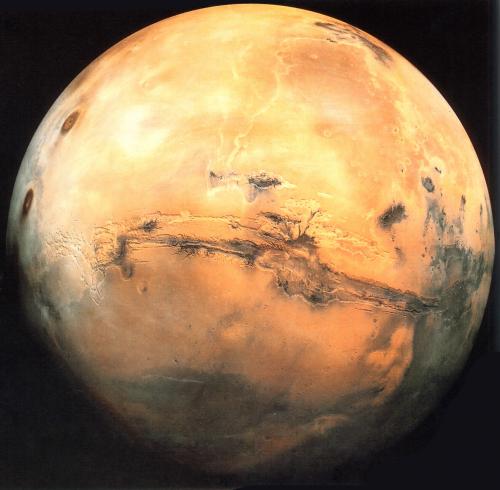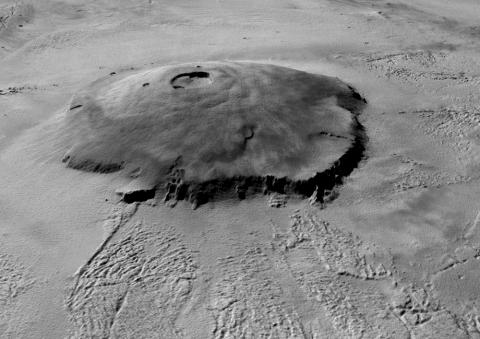Why does Mars have a red colour?
Mars is much smaller than Earth and has no deep oceans, lakes or rivers. Unlike our blue sky, the atmosphere of Mars is red-tinged, with pink and reddish brown shades. Powerful wind storms blast fine dust along the desert-like surface causing these discolorations.
This dust consists partly of iron oxide, which is better known as rust. As the amount of dust varies according to the season, the colour of the atmosphere is also different according to the season. In winter, the dust clings to frozen carbon dioxide which falls to the surface. The atmosphere is then clearer and Mars is then of a lighter colour.
In summer, these particles are no longer frozen into ice and so hang suspended in the atmosphere, whirled by the surface winds. Given the changeable wind direction and strength, the particles can form darker spots or be blown away from certain places.
These storms can persist for weeks, causing our view of the planet’s surface to be blotted out, but also creating spectacular colour changes.
Planet Mars short fact sheet
- Orbit: Average distance to the sun: 227.94 million km (1.52 AU)
- Diameter: 6 794 km
- Temperature: From -133°C to 27°C: in average -55°C
- Pressure: 5.1 millibar at the surface
- Mountains: Olympus Mons (Highest volcano in the solar system) rises to 26 km
- Gravitation: Significantly lower than on Earth (3.71 m.s-²)
- Year on Mars: 687 Earth days
- Day on Mars: 24h 40
- Natural satellites: Deimos and Phobos



